I LOVE trips that involve the exploration of big historical events. For instance, I am a sucker for anything and everything that’s related to the two 20th century World Wars! (D-Day Beaches)
Now, this is NOT because I am a fan of guns, war, nor violence. Definitely not! I simply like to revisit this part of the past because of the various emotions, stories, and perspectives involved. And of course, because of the numerous lessons that can be learned from it — one of which is to never let a World War or any war for that matter to ever happen again.
Given this fact, you can imagine my extreme excitement when my friend and I decided to visit Normandy, France to revisit WWII D-Day landmarks and museums!
NOTE: Truth be told, I actually enjoyed this trip more than Paris! This is not to say that Paris was anything short of spectacular because this city was amazing in its own way; but given my intense love for World Wars, my trip to Normandy left me speechless that in result, the other places that we visited in France had somehow paled in comparison.
D-Day Beaches
» About D-Day
To give you a brief ‘refresher course’ on this, let me outline some facts that surround D-Day — the turning point in World War II!
- In an aim of liberating France and driving away Nazi Germany, Normandy landings (codenamed as ‘Operation Neptune’) was the amphibious and naval plan of routing assault troops across the Channel to secure a strong foothold on the 50-mile coast of Normandy.
- June 6, 1944: D-Day or ‘Operation Overlord’ (codename) was commenced and it was deemed as the largest military and seaborne invasion in history. This codename basically describes the overall battle plan in Normandy from the landing, to the build up on the beaches, and up to the fighting stages.
- It was a formidable task. Not only was it a day with bad weather conditions, but the Germans have also put up an interlinked series of obstacles on the shore composing of mines, metal tripods, barbed wires, pillboxes, and more. (The ‘Atlantic Wall’). Nevertheless, the Allied Forces pushed through with heavy aerial, naval, and airborne bombardment first, and then followed by amphibious landings composed primarily of American, British, and Canadian forces on 5 separate D-Day beaches with code names:
- Utah Beach (Mainly American)
- Omaha Beach (Mainly American)
- Gold Beach (Mainly British)
- Juno Beach (Mainly British & Canadian)
- Sword Beach (Mainly British)
- Other troops who joined the Battle of Normandy on the D-Day beaches were from countries such as Australia, Belgium, Czechoslovakia, France, Greece, Netherlands, New Zealand, Norway, and Poland.
- The enemy was truly taken by surprise. It was still a difficult ordeal though, but in the end, the Allied Forces succeeded in breaching the walls of the Germans, and over the coming months, the Allies have expanded their foothold.
- It is said that the Allies landed around 156,000 troops, of which an estimated number of 10,000 D-Day casualties have happened with 4,400+ confirmed dead.
D-Day was truly a colossal feat. In order to honor those who have taken up the courage to protect the future that we have today, we chose to revisit the past by visiting these D-Day beaches and it was a really interesting experience that I will forever remember!
– – –
» Utah Beach
TRIVIA: Given the strong currents in Utah Beach, the D-Day troops landed further south which was away from their intended landing position. However, it turned out to be a good outcome because there were fewer defensive strongholds at those parts.
NEARBY LANDMARKS:
- Batterie d’Azeville – (Azeville Battery) has a dozen of casemates, four blockhouses with heavy guns, underground tunnels, underground rooms, and ammunition storages. This was one of the places where German held their defensive positions.
- Dead Man’s Corner Museum – gives insight into the battle of the 101st Airborne Division versus the Green Devils (German paratroopers).
- Musée Airborne – (Airborne Museum) displays a wide collection of artifacts from the Airborne Divisions during D-Day.
- Musée de la Batteries de Crisberg – (Crisbeq Gun Battery Museum) one of the largest German coastal artillery batteries with 21 blockhouses.
- Memorial de la Liberte Retrouvee – (Freedom museum) retells the daily lives of Grench people during Nazi Germany’s occupation until the liberation.
- Musée du Débarquement – (Utah Beach Landing Museum) the museum uses films, documents, and models to recall D-Day in a unique way.
- ★ Sainte-Mère-Église – the most famous D-Day village with notable landmarks: panels on the streets explaining the operation of the US paratroopers, a parachute effigy in the church, and more.
.
– – –
» Omaha Beach
TRIVIA: The largest of the 5 D-Day beaches, Omaha was the most heavily defended by Germans. Apart from the strong defensive position of the enemy, the seas were also rough that day which resulted to slow and delayed bombardments in order to ensure that no friendly units were harmed. As a result, a lot of casualties have happened here and had actually been almost a failure.
.
This was an important capture in order to secure the port of Cherbourg which was deemed as essential in building up the Allied forces against the Germans. (Surely the Germans knew the importance of this area that’s why it was strongly fortified).
When we visited Omaha Beach, we personally saw how the cliffs proved to be a deadly strength of the Germans against the Allies — it was very high and steep!
A FUNNY STORY: We wanted to try an uncommon path from the top of the hills in order to reach the bottom of the beach; however… we always ended up encountering dead ends and steep drops. After almost an hour of walking, we gave up and decided to follow the official paved paths. (So imagine Allies trying to climb these bluffs!)
MUST-VISIT:
- ★ Normandy American Cemetery and Memorial – I recommend visiting this tranquil 172.5 acre memorial place. It overlooks Omaha Beach with graves of 9,387 American soldiers. As one of the 14 permanent American World War II military cemeteries on foreign soil, the government of France have granted this land as a perpetual and permanent burial ground (without charge nor taxation) to honor the American soldiers who died during the war.
- ★ La Pointe du Hoc – a clifftop location situated between Utah and Omaha Beach. This site was a wonder of its own given the number of bomb craters that are speckled across the vast surroundings, as well as the few batteries and casemates that are still intact. Also, you will see here a granite pylon that honors the 2nd Rangers Battalion who scaled the cliff in order to capture this area.
.
OTHER NEARBY LANDMARKS:
- 1st Infantry Division Monument – dedicated to the US 1st Infantry Division (“Big Red One”) who invaded the eastern half of Omaha.
- Musée D-Day Omaha – (Omaha D-Day Museum) focuses on the landing in Omaha beach, from vehicles, to weapons and equipment.
- Musée Memorial d’Omaha Beach – (Omaha Beach Memorial Museum) showcases a fine collection of war clothing and equipment as well as veteran testimonials.
- Musée des Rangers – Batterie de Maisy – (Rangers Museum) displays the history, equipment and story of the 2nd Rangers Battalion who attacked La Pointe du Hoc. There is also an outdoor display showing the group of artillery batteries that the Germans had.
.
– – –
» Gold Beach
TRIVIA: The objectives of troops in Gold Beach was to secure a beachhead, go west to capture Arromanches (to establish an artificial temporary harbor for unloading heavy equipment), regroup with the forces at Omaha to capture Bayeux and Port-en-Bessin port, and then join up with the Juno forces in the east.
MUST-VISIT:
- ★ Batterie de Longues at Longues-sur-Mer – situated between the landing beaches of Omaha and Gold. It housed 4 152-mm navy guns with a 20km range; today, it is the only battery in Normandy that has most of its original heavy guns still in place. We visited this place late in the afternoon so it had a very mystifying feeling with it. As we walked around the area, there were times that small planes would pass by above us and it gave me chills as I thought of what the soldiers must have felt like, knowing that in any second, they could be dead…
.
OTHER NEARBY LANDMARKS:
- ★ Arromanches – witness the site that the Allies needed to bring in their big supplies. They have built concrete pontoons here and 20 of the original 115 pontoons still stand today to defy the sea.
- Arromanches 360 – plays the film “The Price of Freedom” on 9 screens in a circular theater as it shows archived film from June 1944.
- Bayeux War Cemetery – the largest British cemetery containing graves of 3,843 British soldiers.
- Musee America Gold Beach – (American Gold Beach Museum) recalls the 1st airmail flight between USA and France, the D-Day landing, and the British beachhead on Gold Beach.
- Musée des épaves sous-marines – (Underwater Wrecks Museum) showcases recovered wrecks and artifacts after 25 years of underwater exploration in the D-Day beaches
- Musée du Débarquement – (The Landing Museum) covers the technological feat that the British army had achieved in building up the artificial harbour in Arromanches.
- ★ Musée Memorial de la Bataille de Normandie – (Battle of Normandy Memorial Museum) shows a chronoligical presentation of the events during D-Day complete with exhibitions of equipment, weapons, arms, large artillery, and more. It is said to be one of the best D-Day museums.
- Site de Port-en-Bessin – has a monument erected in memory of the 47th Royal Marine Commandoes who were killed during the liberation of Port-en-Bessin — one of the key battles that secured Allied victory and one of the bravest assaults against overwhelming odds.
.
– – –
» Juno Beach
TRIVIA: Landing at Juno was delayed and men have arrived sooner than their supporting armor which resulted to many casualties as they landed. It is said that the German opposition in Juno was really strong, second to that of the forces in Omaha.
MUST-VISIT:
- Beny-sur-Mer Canadian War Cemetery – contains graves of 2,044 Canadian soliders.
- Centre Juno Beach – (Juno Beach Centre) retells Canada’s role in the military operations through audio, film, and displays pre-war and wartime.
- Places to see…
- Site de Bernieres-sur-Mer – has the famous La Maison Queen’s Own Rifles of Canada that commemorates the men of this regiment.
- Site de Courseulles-sur-Mer – has a Sherman Duplex Drive (DD) tank on display and various monuments.
- Site de Graye-sur-Mer – various monuments like the Liberation Monument, Inns of Court Monument, and more..
- Site de Langrune-sur-Mer – has a plaque in memory of the friendship between the 48th Royal Marines Commado veterans and the citizens of the town.
- Site de Saint-Aubin-sur-Mer – has a preserved 50-mm gun casement and stone memorials.
.
– – –
» Sword Beach
TRIVIA: Initial landings were done with low casualties, but advancing from the beach proved to be difficult due to traffic congestion, heavily-defended areas and the only armored counter-attack of the day which altogether haltered further progress towards Caen.
NEARBY LANDMARKS:
- Mémorial Pégasus – covers the remarkable capture of Pegasus Bridge of Gilder Pilot regiment and the 6th British Airborne.
- Musée de la Batterie de Merville – retraces the 6th British Airborne operations.
- Musée Du Mur De L’Atlantique – highlights a 17-meter high concrete tower of the Atlantic Wall which is the only one of its kind that was restored and re-equipped to its original state
- Musée Du Radar – (Radar Museum) the site of a German fortified radar base, it explains the evolution and operation of radar.
- Musée No4 Commando – (N° 4 Commando Museum) encompasses the epic story of the Franco-British Commandos who laned on Sowrd Beach.
- Ranville War Cemetery – most of the 2,235 graves belonged to Ranville, the parachute and glider landings of the 6th Airborne Division.
- Places to see…
- Site D’Hermanville – has monuments such as the Royal Artillery, Allied Navy Sailors, and more.
- Site D’Ouistreham – has several monuments, memorials, museums and military cemeteries.
- Site de Colleville-Montgomery – has a plaque in memory of the 1st Battalion f the Suffolk Regiment soliders, a General Montgomery statue and more.
- Site de Lion-sur-Mer – has monuments such as the Liberation Monument, 41st Royal Marine Commando, and Royal Engineers Corps.
.
• • •
Travel Guide to D-Day Beaches
» How to get there
By car. I highly suggest that you do a trip around Normandy by car since you can then control your time and route. Plus, it’s very convenient especially if you want to stop by smaller towns that are not in the way of trains, buses, etc. We were traveling from Belgium so it took us around 5 hours to get to the D-Day beaches. However, if you’re from Paris, it should take just 2 to 3 hours of driving (take the A13, which passes through Evreux, Rouen, and Caen to Normandy).
By train. From Paris, you can choose between Caen or Bayeux as your final destination stop (Caen takes 1 hour + 47 minutes, while Bayeux takes 2 hours + 4 minutes).
» To get around within Normandy… take buses that cover most of the main D-Day beaches. All routes are mainly operated by Bus Verts du Calvados.
By Air. You can fly directly to Normandy from a foreign location, but it’s best to land in Paris first and then just take a train to Normandy. If you’re already in Paris, it’s not worth it to take a flight to Normandy since it’s so close.
• • •
Overall
I wouldn’t mind visiting Normandy again as well as the rest of the D-Day beaches! Aside from the natural beauty that this region holds, the landmarks, museums, and monuments that it has can surely transport you back in time during one of the world’s biggest events in history: World War II.
I can’t wholly explain the feeling that I felt all throughout our trip but it was a mixture of admiration, wonderment, gratitude, and melancholy. I especially get a tad too emotional especially when I hear and see the accounts of the men who survived the war — even more so when I see footage that shows the soldiers before the war (smiling in front of the camera) and during the war (as they fight for freedom and their life).

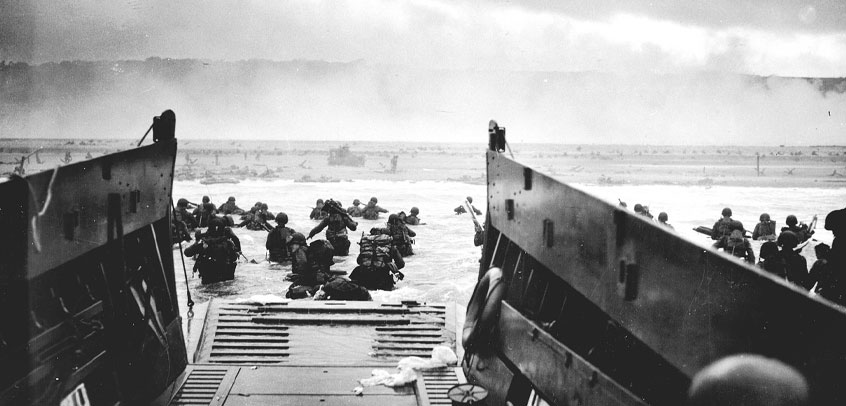

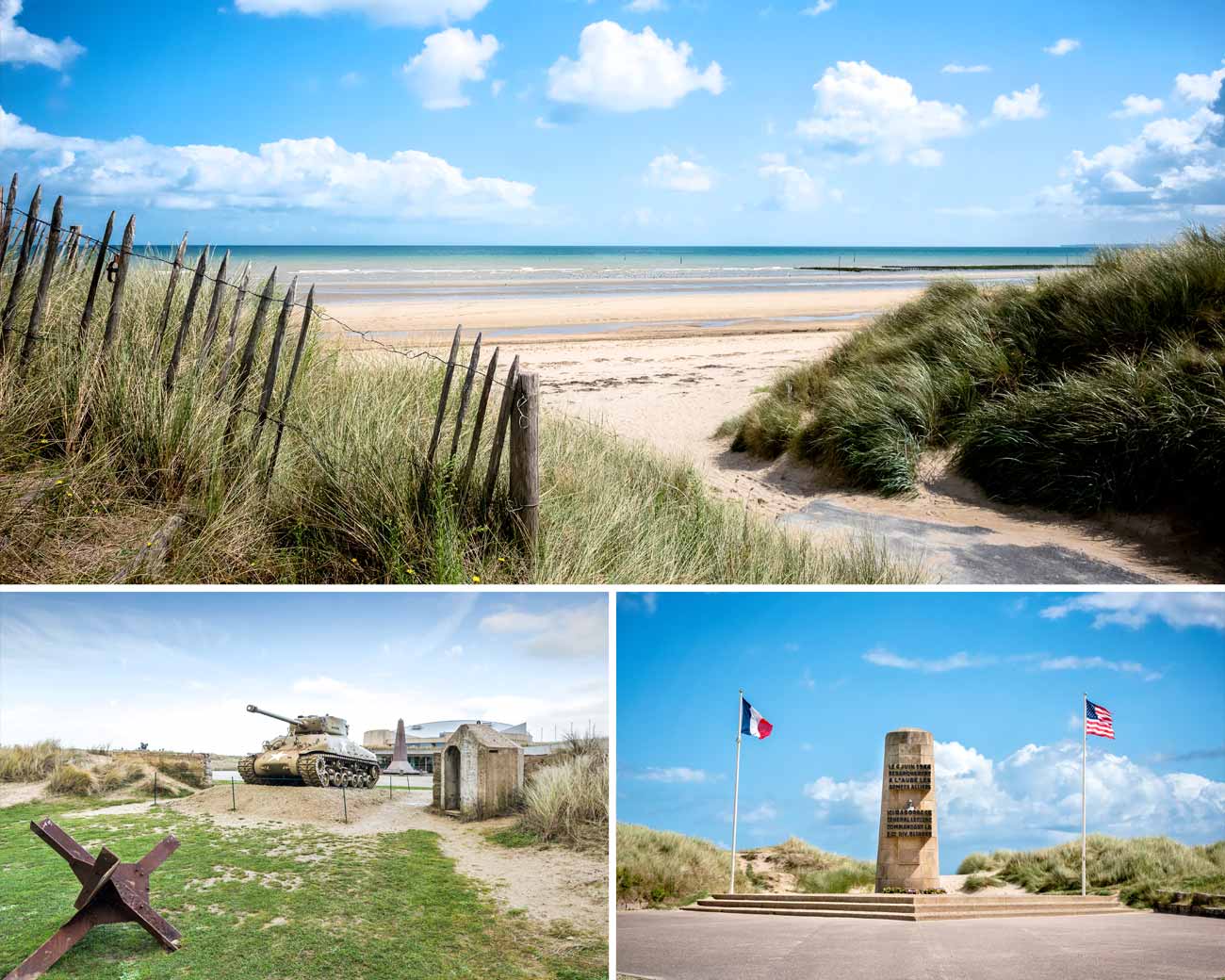
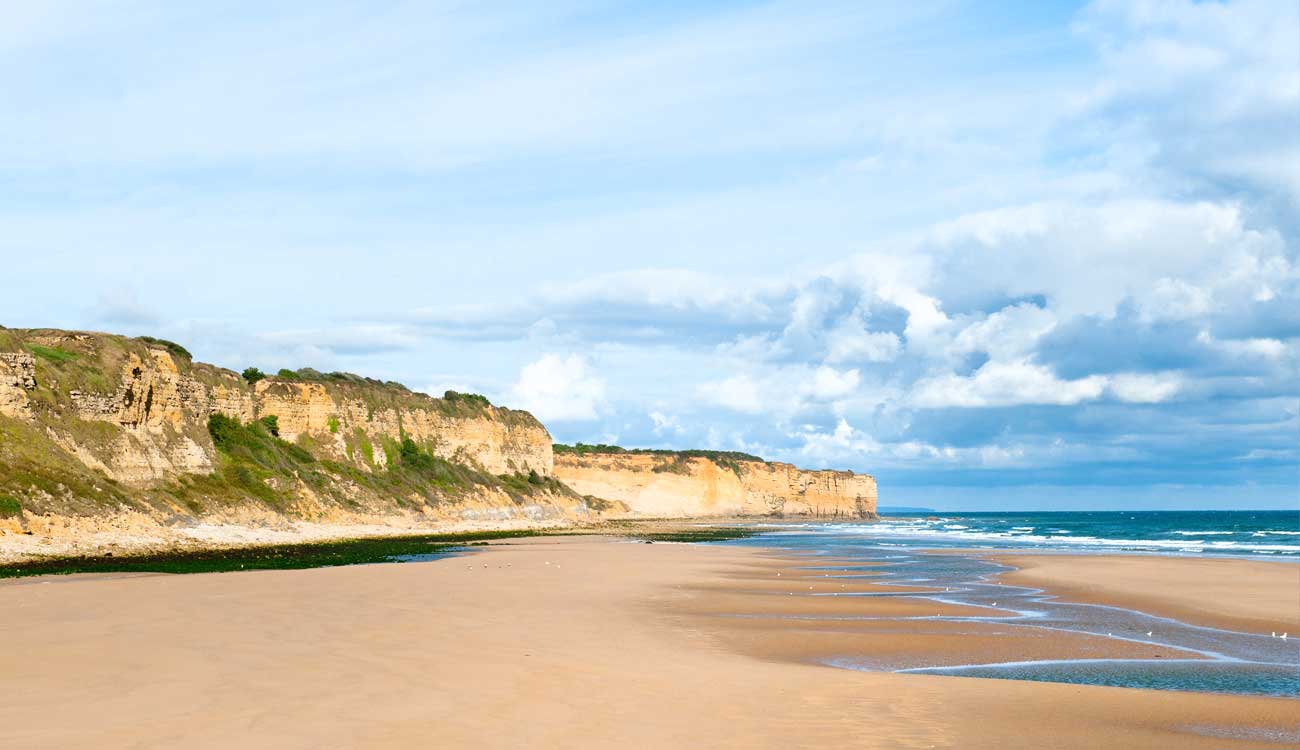


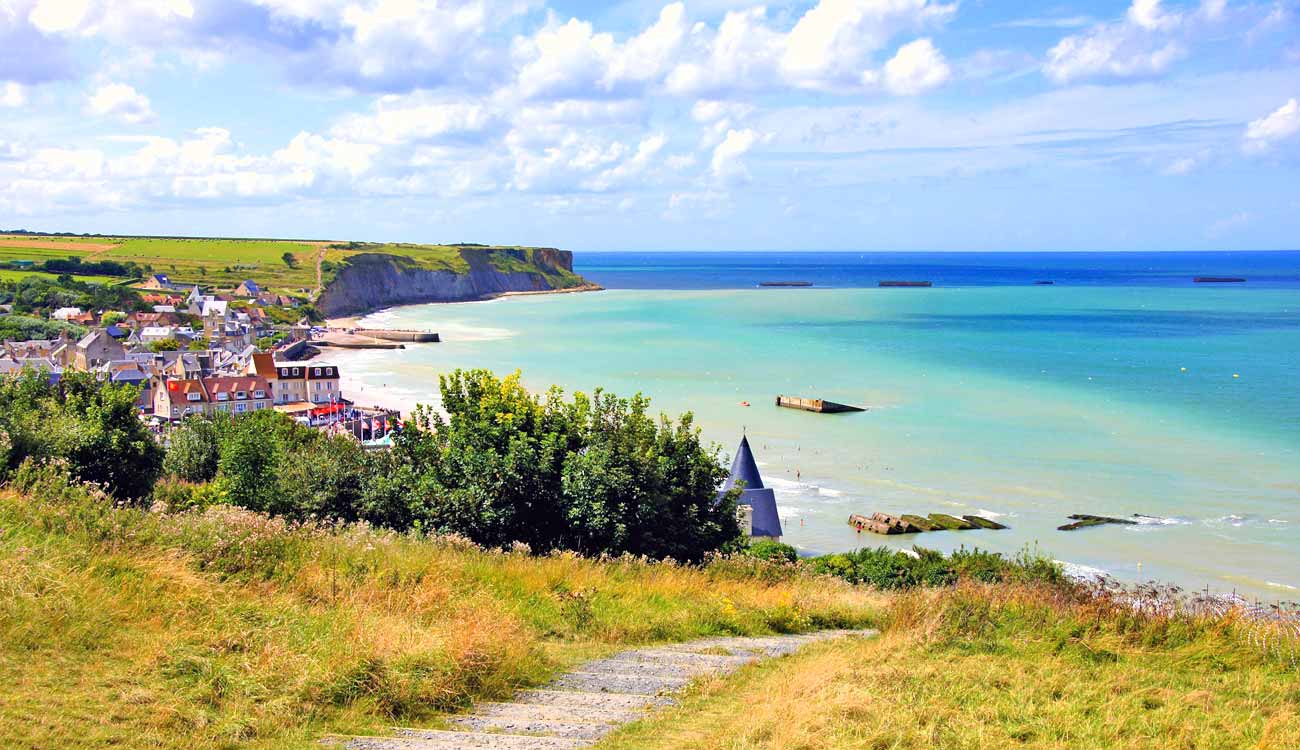
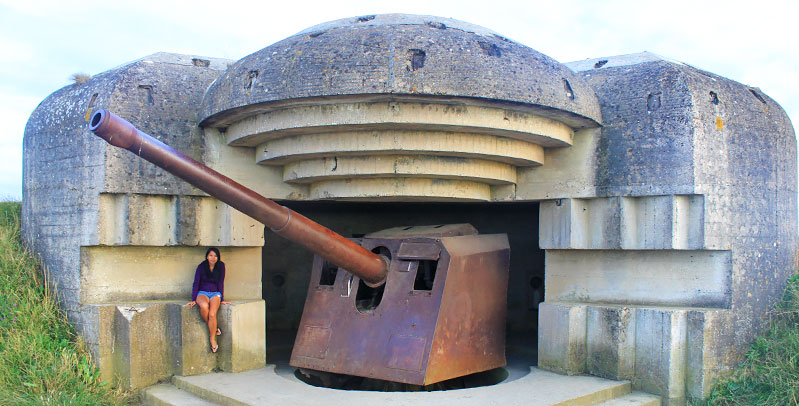
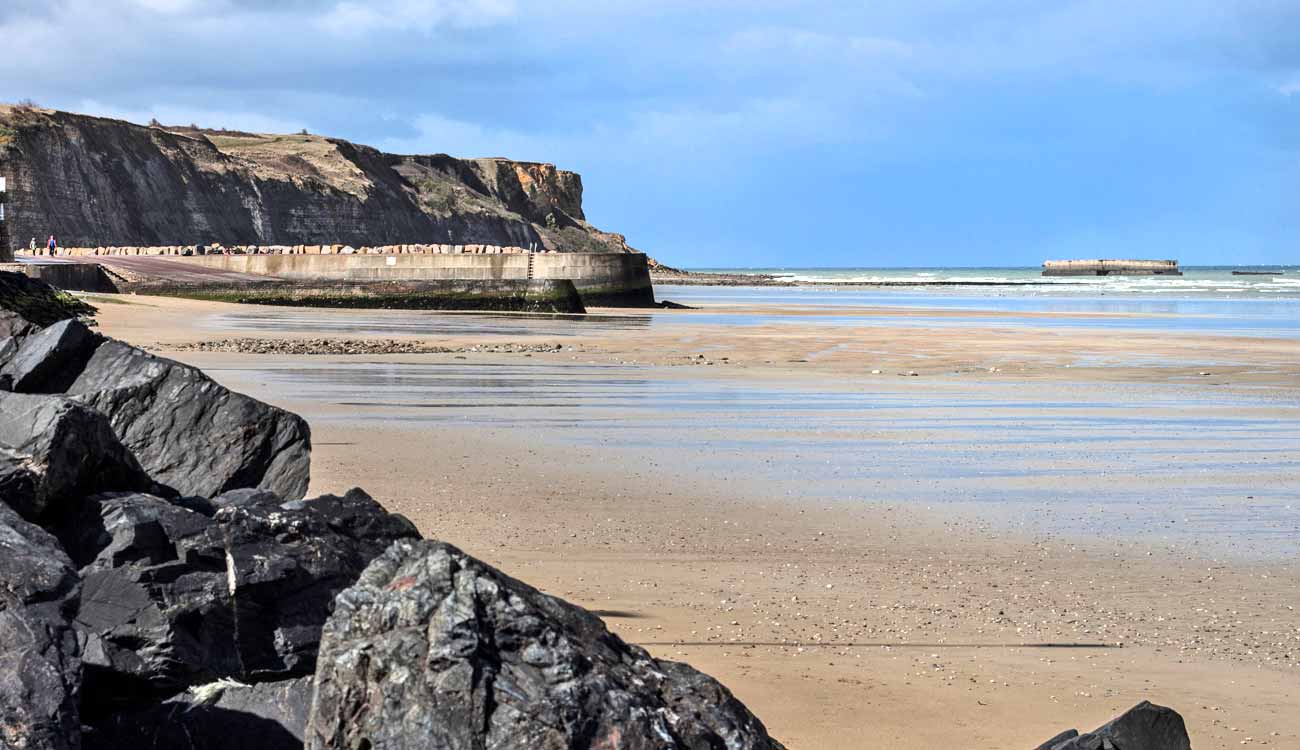
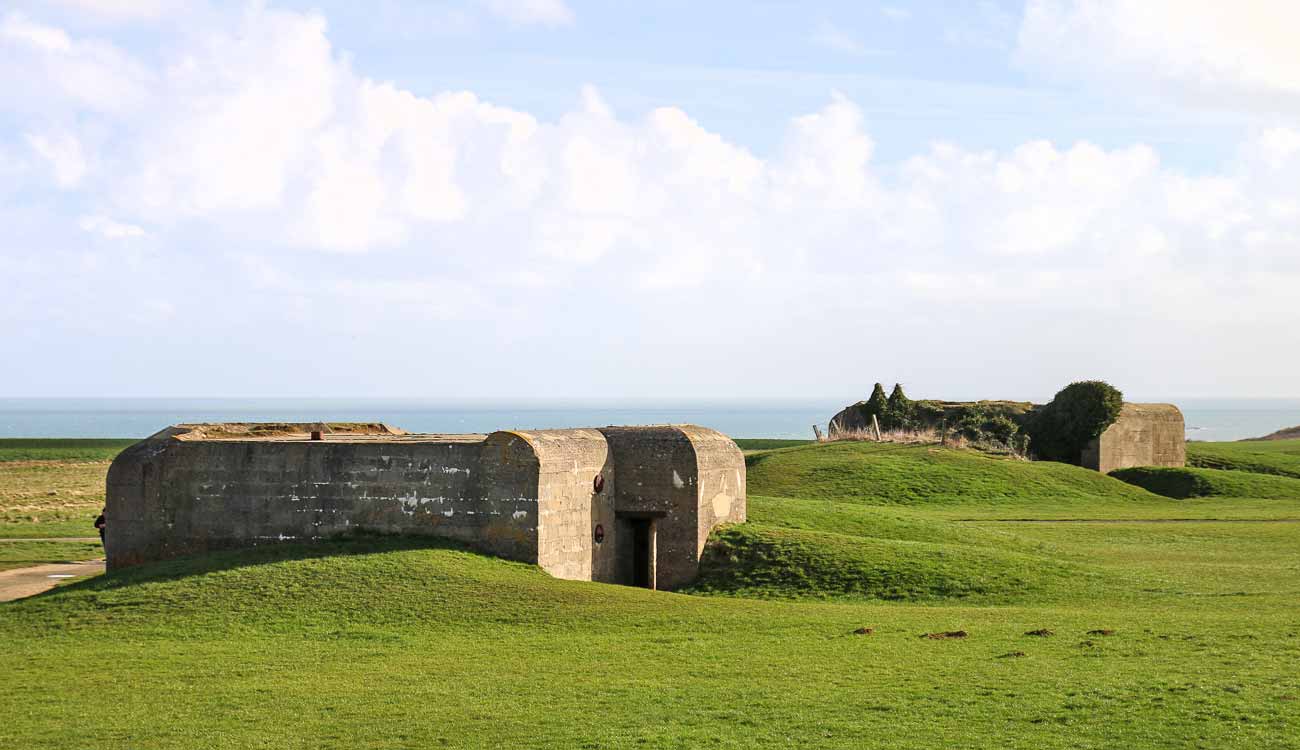



The D Day beaches of Normandy are on my bucket list. Thanks for the detailed information. What suggestions do you have for getting there by ferry from Portsmouth or other ferry ports in England? Thanks!
Hey Roseann! I’m glad you like this post. As for riding a ferry from England, regrettably, I have not gone through that route but I’ve heard that Brittany Ferries are usually being used to get to Normandy from England. Hope that helps!
I am from Normandy and it made me really happy that you enjoyed it so much.
For Museums I believe the best one (and maybe the only one that is worth a visit) is the Memorial of Caen (https://normandy.memorial-caen.com/). They have a great collection about the Second World War and the Battle of Normandy. Besides they also aim to picture other recent conflicts such as the Cold War. It’s very dynamic, have plenty of temporary exhibitions, educational activities, even a famous international human right oratory competition. Other museums are mainly small private collection.
Normandy history also offers an exciting medieval component being the roots of William the Conqueror: his castle and abbeys in Caen, the Bayeux tapestry, the castle of Falaise, Château-Gaillard, etc. Imagine you can go back a thousand year ago!
And just to mention it, if you are a painting amateur, you definitely should have a look at the Impressionism inspiring nest: Giverny, Honfleur, Barfleur, Dieppe, Etretat…
Living very far away from my dear Normandy, I feel quite nostalgic and I love to be able to share it with you. Its people may seem cold at first strike, but give them time and they will open their heart and take you in their warm arms.. trust me!
Great pics btw, it seems that you had a perfect weather! (not always the case unfortunately!)
Aww I’m very happy as well that you’ve shared these additional information! It’s more of a reason for me to go back now ;) Thank you! Your home place is absolutely wonderful and it’s my hope that more people get to visit it. :D
Going to Normandy in the fall and cannot wait! Did you hire a tour guide?
That’s awesome! And oh, I didn’t hire a tour guide. I just rented a car and toured around the region which should be fairly easy for you too since there are signs everywhere and easy to navigate around too.